Do It Yourself
Survival: It Takes a Lot of Heart

So you are planning for surviving disasters, manmade or acts of God. You have food, shelter, weapons and transportation. You have watched hundreds of survivor videos on YouTube. You have the means to purify water, breathe safe air, and stay warm and protected from the elements. You can start a fire with two sticks, a knife and a shoestring. You have several firearms and hundreds of rounds of ammo for each. You are as materially ready for that moment when the SHTF and it’s bug out time. You have prepared your brain and your support system to sustain you and your family.
But have you prepared your body?
In an emergency the ability to think and react quickly, both mentally and physically is a matter of life and death. Recent show on disasters said that the biggest causes of death during a disaster comes from the failure to understand the risk and react when those first few seconds matter most. If your reactions are too slow or worse, no action is taken, your chances of surviving plummet. Peer pressure was shown to be a very big factor in people not acting quickly. A humbling example was the attack on 9/11. Many people evacuated the building as soon as they sensed danger. Far too many tragically hesitated, or worse, had their survival instinct overridden by peer pressure to remain calm and stay in their seats.
Try to imagine you are on the 75th floor of one of the twin towers. The elevators are not an option. Now the only chance you have in order to get out fast, is to take 75 flights of steps on foot. Now adrenaline, the fight or flight hormone, along with a healthy dose of survival instinct, will take you a great distance. The question I have is could you walk down 75 flights of steps, right now, if your life depended on it? If that answer is not ABSOLUTELY, you have a gaping hole in your survival strategy!
The biggest threat to your survival is your own body.
Here is the question, would considering that 75 flight effort make you hesitate, even if only for a couple of seconds, out of fear you couldn’t make it, or worse, you feared looking out of shape because you would struggle and gasp for air and have to stop repeatedly to catch your breath? What if you had a warning that a nuke was set to go off and there was a 10 minute warning and you were a mile from the nearest shelter, could you run a mile in under 10 minutes? Do you see the pattern here? Is your cardiovascular system sufficient to sustain these efforts or are you going to be at risk of dying because you cannot get to safety in time?
Just as you plan the material aspects of your survival, you must plan on being fit enough to implement that plan. This discussion is addressing the most critical factor in most survival situations, the ability to flee and quickly. This has to do with the ability of your heart to deliver oxygen and glucose to your muscles. In an effort lasting longer than a few seconds but less than 20 minutes, glucose is what is being burned. If the work demand exceeds our ability to get oxygen to the muscles, in this case mostly our legs, and get it back to the heart, the glucose metabolism is anaerobic and we produce lactic acid. That is what causes that burning sensation in our legs and causes us to breathe heavily trying to get more oxygen to our legs.
So let’s put this in perspective. You spend several hours each month at the range with your firearm. You practice shooting, field stripping, unjamming and reloading your firearms. Do you spend time at the gym or out on the trail, getting your heart to pump harder and faster so it too can be ready for whatever you throw at it? If not you are setting yourself up for failure. In the Twin Towers scenario, your CCW is not going to get you out alive, it’s going to be your heart that will determine if you live or die.
Just like you know what ammo to use in your gun, you should know your cardiovascular fitness score. There are several ways you can get a good guess at it. Your local gym and a treadmill is the easiest. You might need a heart rate monitor, but most treadmills have handles to hold that measure your heart rate. The test will involve walking up an incline and possibly some light jogging. If you have a medical condition, speak to your physician first before attempting this. He may want you to come in for a graded exercise test with EKG. You will want to find the fitness test protocol on the treadmill options menu. When the test is completed, you will receive a score of either METs or ml/kg/min. One MET is 3.5 ml/kg/min. This is the ability of your body to deliver oxygen and use it. This is called your VO2 or maximum oxygen uptake. It’s your horsepower to body weight ratio. 1 MET is what we expend at rest.
There are also tests involving walking a distance quickly and tracking your heart rate and the recovery rate. Faster recovery means better shape. The purpose of these tests are to determine how cardiovascular fit you are. Extra weight from fat dilutes and lowers your score. So if you are over fat, your fitness score will be lower. So shedding those extra pounds is a good survival strategy as extra weight impairs your cardiovascular performance.
MET Table
| Activity level | METs/Hr of Activity | Activity |
|---|---|---|
| Very Light | 1.3 | Standing |
| 1.5 | Reading, talking on telephone | |
| 1.8 | Sitting in class, studying, note taking | |
| Light | 2.0 | Walking at a slow pace (1-2 mi/hr), playing musical instrument, Light gardening, Light office work, light use of hand tools (watch repair or micro-assembly, light assembly/repair); standing, light work (bartending, store clerk, assembling, filing) |
| Light Plus | 2.5 | Walking downstairs, Cooking, light housekeeping, shopping, Pushing stroller with child, walking dog |
| 2.5 – 3 | Walking at an average pace (2-2.5 mi/hr), slow dancing, Golf (using power cart), bowling, fishing | |
| 3.0 | Standing doing light/moderate work (assemble/repair heavy parts, welding, auto repair, pack boxes for moving, etc), patient care (as in nursing); driving heavy tractor, bus or truck, Washing car or windows, mopping, moderately vigorous playing with children, sweeping outside house, vacuuming, picking fruit or vegetables, scrubbing floors | |
| Moderately Vigorous | 3.5 | Walking at a brisk pace (1 mi every 20 min), Weight lifting, water aerobics, Golf (not carrying clubs), eisurely canoeing or kayaking, Walking on job, 3 mph (one mile every twenty minutes), in office – moderate speed, not carrying anything, or carrying only light articles. |
| 4 | Walking at a very brisk pace (1 mi every 17 to 18 min), climbing stairs, dancing (moderately fast), leisurely bicycling <10 mph, Raking lawn, planting shrubs, weeding garden, heavy yard work or gardening activities, Masonry, painting, paper hanging, moderately heavy lifting, moderately heavy farm work | |
| Moderately Vigorous Plus | 4.5 | Slow swimming, Golf (carrying clubs) |
| 5 | Walking at a very brisk pace (one mi every 15 min), Most doubles tennis, Dancing (more rapid), Some exercise apparatuses, Walking downstairs or standing, carrying objects about 25-49 lb, Digging, spading, vigorous gardening, using heavy power tools; general gardening, mowing lawn (hand mower), Painting, carpentry, cleaning gutters, laying carpet, other vigorous activities, Chopping wood | |
| Vigorous | 6 | Slow jogging (one mi every 13 to 14 min), Ice or roller skating, Doubles tennis (if you run a lot), Using heavy tools (not power) such as shovel, pick, spade; driving heavy machinery, forestry |
| 6 – 7 | Hiking | |
| 6 – 8 | Rowing, canoeing, kayaking vigorously, Dancing (vigorous), Some exercise apparatuses | |
| 6-10 | Bicycling 10 to 16 mph, Swimming laps moderately fast to fast, aerobic calisthenics | |
| 7 – 12 | Singles tennis, squash, racquetball | |
| 8 | Jogging (1 mile every 12 min), Skiing downhill or cross country, Heavy farming work | |
| 10 | Running 6 mph (10-minute mile) | |
| 13.5 | Running 8 mph (7.5-minute mile) | |
| 16 | Running 10 mph (6-minute mile) |
Click here to view the original article for the above table
Where do you see yourself hitting the wall? Do you struggle at 6 METs or can you routinely handle 13 METs? The higher the score, the more cardiovascular fit you are, and the increased ability for your body to handle the flight part of getting out of danger. Include knowing your fitness score and work on improving it so you can survive dangerous situations. If your MET maximum is lower than you feel comfortable with, start doing cardio training. It can be a matter of life and death.
Click here to view Van’s previous article on physical fitness
Just how much big of a role does physical fitness play in your survival tactics?
Survival Fitness Tips
Survival Fitness: Your Body Needs As Much Upkeep As Your Rifle
The Healing Properties of Catnip Tea | Survival Fitness
-

 Do It Yourself7 months ago
Do It Yourself7 months agoParacord Projects | 36 Cool Paracord Ideas For Your Paracord Survival Projects
-

 Do It Yourself9 months ago
Do It Yourself9 months agoHow To Make Paracord Survival Bracelets | DIY Survival Prepping
-

 Do It Yourself9 months ago
Do It Yourself9 months ago21 Home Remedies For Toothache Pain Relief
-

 Do It Yourself10 months ago
Do It Yourself10 months agoSurvival DIY: How To Melt Aluminum Cans For Casting
-

 Exports8 months ago
Exports8 months agoAre Switchblades Legal? Knife Laws By State

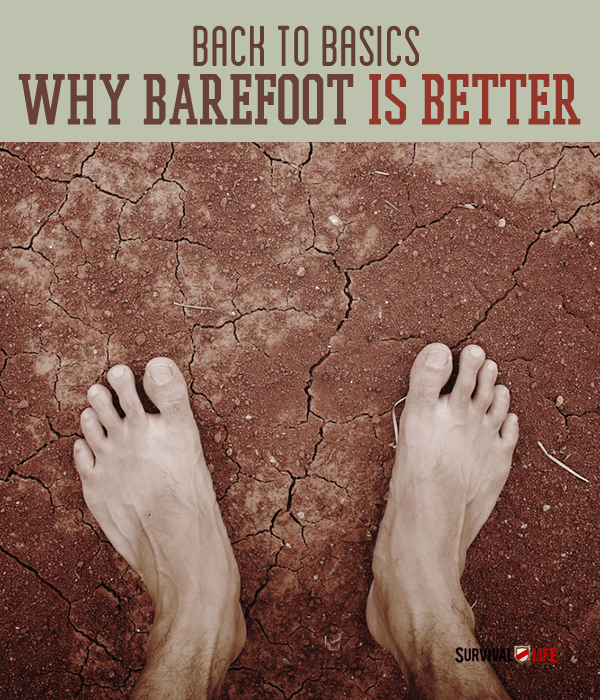
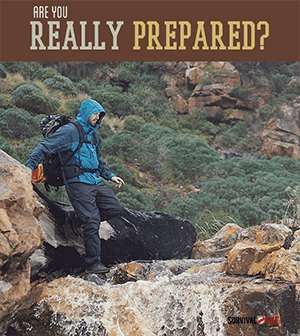
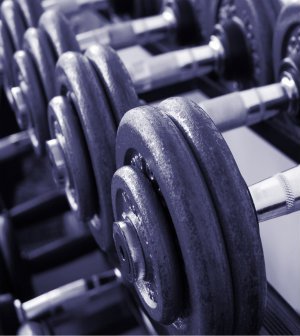
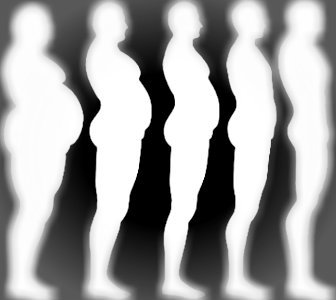

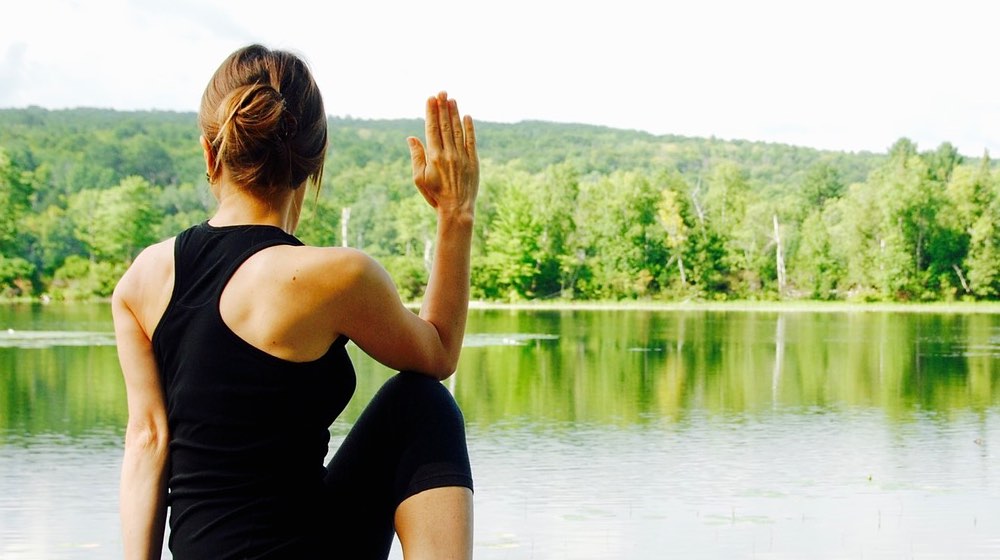

Christopher
February 25, 2013 at 4:43 AM
I loved your last article, and would like to see more by way of actual workouts, reps, etc. Served in the Corps, deployed to Afghan as a Machine Gunner(31′ Grunt Life!) and am a native and proud Texan. I am myself in good physical shape, and am modestly prepare(as much as my bankroll allows, definitely don’t have the money for private bunkers) so I have always stressed the need for physical fitness as a practical tool for survival in any disastrous situation. Keep up the good work!
Van
February 27, 2013 at 7:50 PM
Christopher, thanks for comment. I am going to get to actual workouts. If you all are not familiar with TRX suspension trainer, I suggest you YouTube search. also, if tight on funds, rather than spending ~$200 for TRX brand suspension trainer, YouTube has several videos how to build your own for about $40. This is the perfect survival home gym. Takes up space about the size of a pair of shoes. navy seals approved. Can work out almost anywhere with this thing.
David Lee
February 25, 2013 at 8:37 AM
Excellent article! I’m no slouch but have definitely been thinking along the same lines in that we’ve gotten a good start on material prep but could stand to put more emphasis on physical preparation. My wife and I are in our 50s and can do a 4 mile hike in under an hour…now I’m thinking 6 miles in under an hour would be better (the airborne run). Thanks for the motivation.
Joe
February 25, 2013 at 8:56 AM
congratulations on being in such good health! I only hope to be able to keep up with that timing when I get older
Van
February 27, 2013 at 7:51 PM
I love seeing people take their fitness seriously.
Van
February 28, 2013 at 4:22 PM
Awesome. It can make a matter of life and death difference.
kaytee
February 25, 2013 at 12:17 PM
I have no idea if I’d have the stamina to get down 75 stairs (let alone 75 flights of stairs), nor run a 10-min mile. However, the question is irrelevant for me– I have hip and knee problems which would prevent such, anyway. I’d need to find a heavy box to sit in and “sled” down….
Your “Level Four”, and maybe “Level Five”, activities that don’t involve stairs or inclines, or “pounding pavement” are doable. I garden, and for me, that means building mortarless block walls at the moment. No stamina problems from digging, moving dirt, or lugging the blocks. Have a few smashed fingers, though. And my hip hurts more than usual, probably due to necessary climbing (though I’m careful to use the “other leg” as much as possible).
old et53
February 25, 2013 at 4:58 PM
I’m not in the shape I was when I got out of the Army back in ’87 but because of the loss of L3,L4 and L5 being Service Connected Disabled and not getting any help from the V.A. for 20 years until Sec. of Defense Gates got involved and the muscles in my back having knotted up and pulled my spine to the left so that I have lost 3″ in hight. Before I started to finaly get treatment and could no longer work and lost my place on the lake, I lived in the back of my truck in the Ouachita National Forrest for 1 and a half years living off the land I’d venture to say I could survive!
Van
February 28, 2013 at 4:21 PM
Check out the link to the video I posted earlier.
Jesse Mintun
February 25, 2013 at 12:43 PM
What would recommend for someone in chronic pain. I have gone through 8 back surgeries, which left me needing medication just to sit up. Standing, walking, and (worst of all) is sitting, especially in a car. I have a stim implant that slows down the constant words in my head, (your back is hurting). I know I can’t save enough pills to last very long.
I dearly want to be in this no matter where it takes America to be free again and a return to being a Republic. I am fully ready to be a distraction or a target if needed. This I would do gladly.
How hard, and long does it take to learn meditation? If anyone has any ideas, please email me. I have a family to see through this. I will protect them come hell or high water. I just dread that sound in my head, “your back hurts”.
Thank you in advance,
Jesse
Christopher
February 25, 2013 at 2:13 PM
I would focus on some low impact workouts, water aerobics and swimming. You’ll work out more muscles than you would running, and it will help build up your core strength. I have dealt with chronic back pain ever since I sustained injuries due to an IED blast overseas. For awhile, it really kept me down, but I was able to get back on the horse so-to-say. Start slow, and do your best not to over exert yourself, as this leads to injuries, and will only slow down your progress. Like you said, you have a family to see through these coming times. Just the fact that you are willing to take these steps, you have overcome this biggest mental hurdle that comes with your injuries. Now that you have the mental drive and a goal in mind(your family’s safety being a great motivator) there is no reason why you can’t get yourself to at least a manageable health level.
Start off with some water aerobics and swimming, if you can begin workin your way up to activities like rowing, low weight body exercises and circuits using exercise and medicine balls. Good luck with your progress!
“A scar means, I survived”
Van
February 28, 2013 at 4:18 PM
Did you see the TRX workout I posted?
Christopher
February 28, 2013 at 8:58 PM
Yes, and I found it quite interesting. I’m gonna start on it next week, I’ve been workin on alot of endurance training lately, but next week when I resume my training in different fighting styles, I’ll be incorporating it as well. I’m younger so I can push myself harder than some of the others on this thread, and I intend to keep pushin myself hard. Thanks for the advice!
*Disclaimer, age certainly isn’t a disqualifying factor, my grandfather was a medic in Korea, and despite various injuries, he still makes it a point to be active every day.
“If you have a scar to talk about, it means you survived.”
Van
March 2, 2013 at 9:00 AM
Christopher, its tragic that more younger people are looking like their grandparents with regards to excess weight. Several years ago I was subbing PE at my alma mater. I saw a “woman” going room to room distributing papers and picking up stuff. Later in the week, she was in my PE class, and I was stunned to find out she was an 8th grader. I thought she was 30+ years old. I was stunned. When I was a teen, 1.5% of high school grads were obese. The number now is pushing 15+%. This is a national tragedy and a national embarrassment. these poor kids will struggle throughout their lives because nobody got in there face and told them being obese is just plain wrong. Period.
kaytee
February 25, 2013 at 2:45 PM
“How hard, and long does it take to learn meditation?”
That’s going to vary– a lot!– depending on your personal situation/needs. Meditation doesn’t have to mean “sitting”. It’s mostly about shutting out– and shutting up– all the outside “noises”… to rest your brain, while still being awake. Folding laundry, washing dishes, and hand-weeding are all suitable for doing a “working meditation”– they’re repetitive, and pretty much “mindless” tasks… concentrate on what your hands are doing… “ritualize” your motions, don’t be concerned with “efficiency”, or speed, or what you’ll do when you’re done, or what you’ll have for lunch, or…. Just focus on the task in front of you. Or, if you’re out and about, do breathing exercises– breathe in, all the way down to the bottom of your lungs to a slow count of 3 or so, hold it for the same count, breathe out to the same count, forcing all the air out of your lungs; when you have the rhythm of this down, start counting your breaths– 1 (in, two, three; hold, two, three; out, two three), 2 (in two three; hold two three; out, two three), 3…. etc. Go up to 10– if you lose count (easy to do when you’re starting), start over with “1”; again– don’t think of anything except the breathing– if a “thought” pokes you, just let it pass through your mind without focusing on it. Eventually, you’ll be able to combine your “working” and “breathing” meditations. Added benefits– good lungs and well-oxygenated blood! All this won’t make your pain go away– but it will help you “live with it” (I also have chronic pain– fibromyalgia– but am not taking medication other than occasional Motrin; “learning to live with it” isn’t always a “good thing”– I’ve become accustomed enough to a “certain level”, that when I broke my wrist a little over a year ago, I didn’t realize I had a serious injury. The pain wasn’t all that much worse than “everyday” pains; I waited 3 weeks before having it checked, and only went in then, because I was having problems using that hand).
You also might see if there are any Buddhist or Hindu temples/groups near you– they’ll often have classes, and those catering to non-ethnic members/non-members generally conduct them in a minimally “religious” manner.
Good luck!
JD
February 25, 2013 at 5:11 PM
Jesse:
Meditation is quickly learned but usually required a lot of practice before you will get to the point that you wish to reach. You can find meditation sites on the web, but, depending on where you live, a better alternative is to go to kadampa.org and find the closest place to you that offers meditation classes. These classes are low cost and taught by Buddhist Monks and Nuns. They do not try to prostylize and are some of the most friendly and gentle people you will ever meet. I learned meditation from Buddhist Monks in the Far East while in the Army and it has come in very handy many times.
Van
February 27, 2013 at 7:56 PM
Not a doc or PT. we know much back pain is not associated with disc issues and we know many with disc issues have no back pain. Typically I would check hamstring flexibility, and pelvic tilt. Poor stomach tone and abdominal adiposity result in anterior pelvic tilt and lumbar lordosis. Pain often follows. Also piriformis syndrome can be the culprit. it’s an external hip rotator and crossed legs or siting for long periods of time cause tightened piriformis muscles and in many, sciatic irritation.
Van
February 28, 2013 at 4:21 PM
First correctly and accurately describe cause of pain. Try to use the correct medical terms if you were diagnosed .
That will give me an idea where to start .
anthony
February 25, 2013 at 9:12 PM
Many of us are in great shape for our age. The only problem is that many of us quite elderly, and can’t be expected to run a 10 minute mile. Ditto for the handicapped. We can only do the best we can, and hope it’s enough.
Van
February 27, 2013 at 7:57 PM
True, but most of us are far more capable than we give ourselves credit for. Wi training that upper limit goes higher.
van
February 28, 2013 at 8:45 AM
Let me provide an great example of a workout that was both muscle overload taxing but had me sweating and puffing. My heart rate went up to between 130 and 150 the whole time. My cardio. I did this TRX workout in 45 minutes. No rest. only time to switch positions or handgrips.
4 pairs of 10 rep sets each pair
two handed rowing
two handed chest press with pectoral squeeze crossing hands
8 sets
one handed rows
one handed chest press
16 sets
two hand rear delt row
two reach out plank – hands over head
8 sets
two hand “I” shoulder raises
neo with hand behind the back each side
12 sets
total of 46 sets in 45 minutes. both weight lifting and cardio at the same time. no wear and tear on the knees, back, hips or feet/ankles. Lots of large muscle compound movements. Lots of core work maintaining straight body alignment. Few times I could not catch my breath. I have exercise induced asthma and when it kicks in I kind of know I am pushing real hard. I choose to use my inhaler very very sparingly.
TRX suspension trainer. The ultimate survival prepper home gym. You can take it anywhere and use it anywhere. I once trained a woman in the hallway of her condo using front door. Used a playground jungle gym. A tree in the front yard. A concrete street light post. The versatility is endless as the exercises are.
kaytee
February 28, 2013 at 10:27 AM
If you have “mechanical” problems with hip/leg/ankle joints, that still doesn’t help you run a 10 min mile, or down 75 flights of stairs, which were the scenarios posed in your article.
And a heart rate of 130-150 is way too high for elderly and/or those with certain health problems. One size does not fit all.
Van
February 28, 2013 at 12:16 PM
Did not imply it did. I am a senior , I have been blessed with no injuries that would interfere with either. My point was to demonstrate that a TRX workout can be both progressive resistance training and it can be cardio. 130-150bpm is good for 57 year old male. If you have physical limitations, I would invite you to watch this and reconsider how much is real and how much is mental.
http://youtu.be/qX9FSZJu448
This guy had serious issues. Possibly worse than yours. The ending will stun you. Maybe motivate and change your outlook when your see what is possible redefined
One solution does not fit all. One attitude does. The attitude of changing your perception of what you are capable of doing.
In the video listen to his attitude.
Vincent Keat
June 20, 2013 at 3:13 PM
Exercise can help prevent excess weight gain or help maintain weight loss. When you engage in physical activity, you burn calories. The more intense the activity, the more calories you burn. You don’t need to set aside large chunks of time for exercise to reap weight-loss benefits. If you can’t do an actual workout, get more active throughout the day in simple ways.’,^-
Remember to take a look at our very own web-site http://www.healthdigest101.com
Pingback: Kettlebell Is The Ultimate Tool For Physical Preparedness | Survival Life
Pingback: Why The Kettlebell Is The Ultimate Tool For Physical Preparedness | Primitive technology
Pingback: Why The Kettlebell Is The Ultimate Tool For Physical Preparedness – Ultimate Survival Alerts
Pingback: Why The Kettlebell Is The Ultimate Tool For Physical Preparedness
Pingback: Elementor #386 | Fitnesstime
Pingback: Self-Defense - The 4th Pillar of Survival: Conquering The Cornerstones
Pingback: Conquering The Cornerstones: Self-Defense – The 4th Pillar Of Survival – Ultimate Survival Alerts